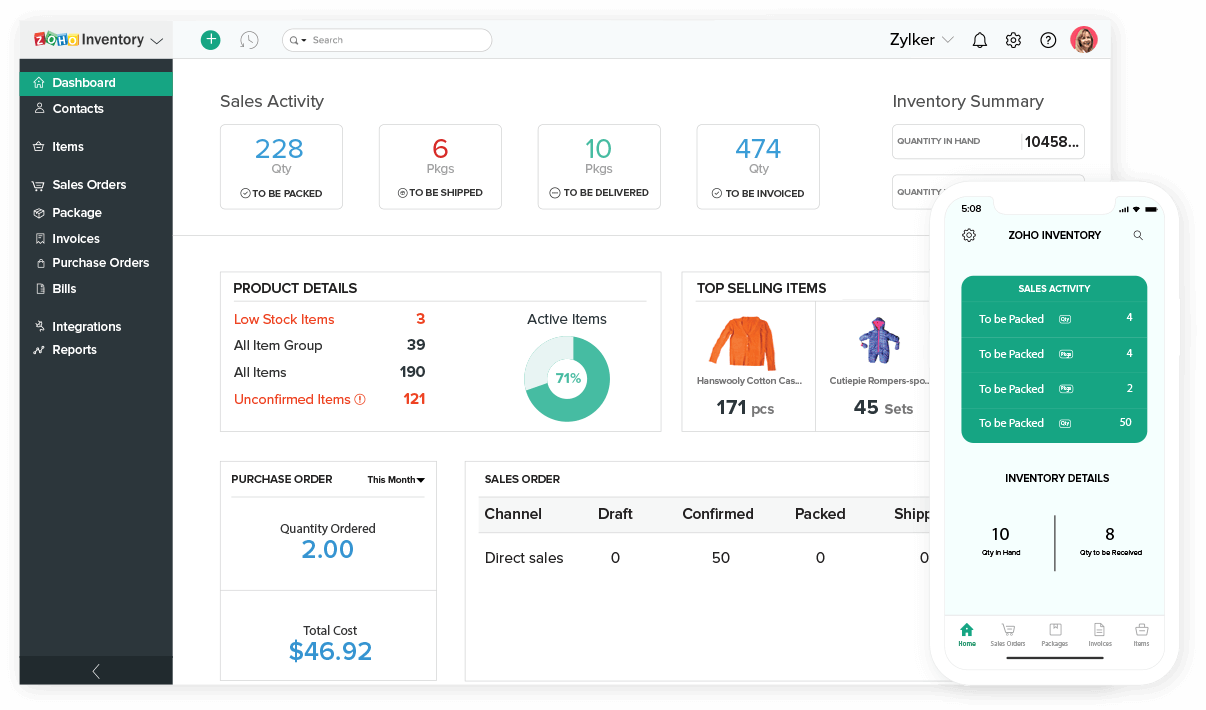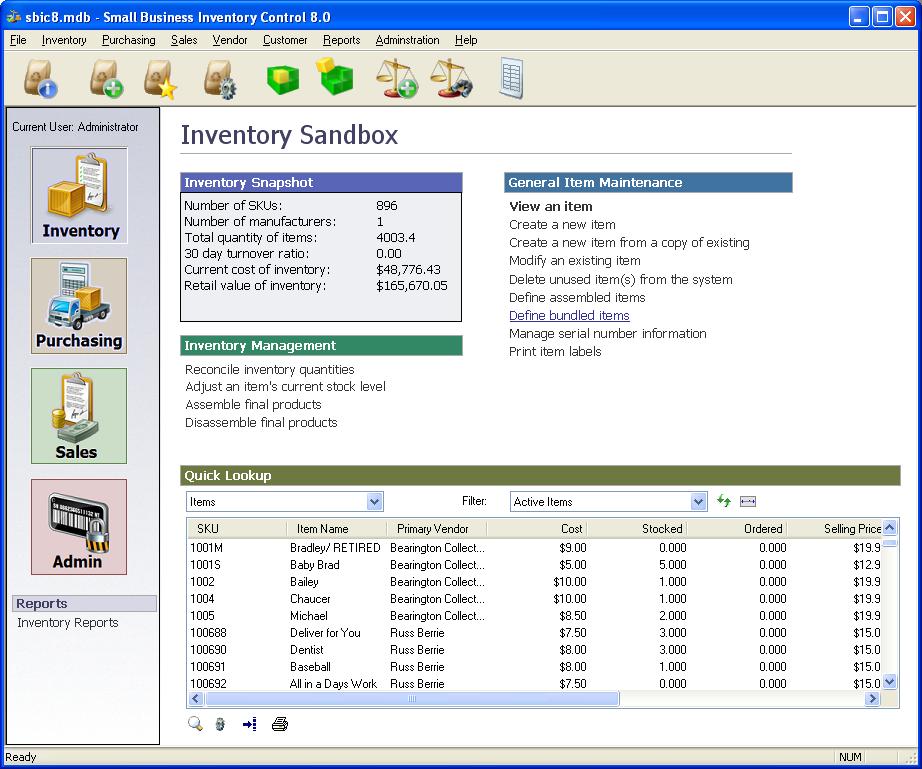Inventory tracking software for small businesses is a game-changer, offering a powerful solution to streamline operations and boost efficiency. With real-time inventory visibility, automated tracking, and improved accuracy, this software empowers small businesses to make informed decisions and optimize their inventory management processes.
From enhancing customer satisfaction to reducing waste and optimizing cash flow, the benefits of inventory tracking software are undeniable. Let’s dive into the key features, implementation strategies, and success stories that demonstrate the transformative impact of this technology on small businesses.
Benefits of Inventory Tracking Software for Small Businesses

Inventory tracking software streamlines operations for small businesses, enhancing efficiency and accuracy. It provides real-time visibility into inventory levels, allowing businesses to make informed decisions about purchasing, stocking, and sales. Automated tracking eliminates manual errors, ensuring data integrity and reducing the risk of overstocking or understocking.
Improved Inventory Management
Inventory tracking software centralizes inventory data, providing a comprehensive view of stock levels across multiple locations. This eliminates the need for manual counting and spreadsheets, reducing the likelihood of errors and discrepancies. Real-time updates ensure that inventory levels are always accurate, enabling businesses to optimize stock levels and avoid costly overstocking or stockouts.
Enhanced Order Fulfillment
Accurate inventory tracking improves order fulfillment by ensuring that businesses have the necessary stock to meet customer demand. Real-time visibility allows businesses to identify and address potential stockouts proactively, preventing delays and lost sales. Automated tracking also streamlines the picking and packing process, reducing errors and improving order accuracy.
Reduced Costs
Inventory tracking software helps businesses reduce costs by optimizing inventory levels. Accurate tracking prevents overstocking, which can lead to wasted inventory, storage costs, and product spoilage. It also helps businesses identify slow-moving or obsolete items, allowing them to clear out excess stock and free up valuable storage space.
Key Features to Consider When Choosing Inventory Tracking Software
![]()
Choosing the right inventory tracking software is crucial for small businesses. Here are some essential features to consider:
Ease of Use:The software should be intuitive and easy to navigate, even for non-technical users.
Scalability
- The software should be able to handle the growth of your business, whether you’re just starting out or expanding rapidly.
- Look for software that offers flexible pricing plans and allows you to add or remove users as needed.
Integration Capabilities
- The software should integrate seamlessly with your other business systems, such as accounting, CRM, and e-commerce platforms.
- This integration will streamline your operations and eliminate the need for manual data entry.
Reporting Functionality
- The software should provide robust reporting capabilities that allow you to track key inventory metrics, such as stock levels, sales performance, and reorder points.
- These reports will help you make informed decisions about your inventory management.
Cost Considerations for Inventory Tracking Software

Selecting the right inventory tracking software for your small business requires careful consideration of the associated costs. Understanding the pricing models and factors influencing software costs will help you make an informed decision that aligns with your budget.
The pricing of inventory tracking software typically falls into three categories:
- Subscription fees:Monthly or annual fees that grant access to the software and its features.
- Implementation costs:One-time fees for setting up and customizing the software to meet your specific needs.
- Ongoing support:Fees for technical assistance, updates, and maintenance services.
Factors Influencing Software Cost
The cost of inventory tracking software can vary depending on several factors:
- Number of users:The more users who will be accessing the software, the higher the subscription fee.
- Features and functionality:Software with more advanced features, such as real-time inventory tracking or integration with other business systems, typically costs more.
- Implementation complexity:The complexity of your business and the level of customization required will impact the implementation costs.
- Vendor reputation and market share:Established vendors with a strong reputation may charge higher prices than newer or less well-known companies.
Tips for Finding Affordable Options
To find affordable inventory tracking software, consider the following tips:
- Compare prices from multiple vendors:Get quotes from several software providers to compare pricing and features.
- Look for open-source software:Open-source software is typically free to use, although it may require additional costs for implementation and support.
- Negotiate with vendors:Don’t be afraid to negotiate with software vendors for a better price or payment plan.
- Consider cloud-based software:Cloud-based software typically has lower upfront costs than on-premises software, as you don’t need to purchase and maintain hardware.
Emerging Trends in Inventory Tracking Software

The inventory tracking software landscape is constantly evolving, with new trends emerging all the time. These trends are driven by the need for businesses to become more efficient and accurate in their inventory management practices.
Two of the most important trends in inventory tracking software are the use of artificial intelligence (AI) and cloud-based solutions.
Artificial Intelligence (AI)
AI is being used in inventory tracking software to automate tasks such as demand forecasting, inventory optimization, and fraud detection. This can free up small business owners to focus on other aspects of their business, such as sales and marketing.
For example, AI can be used to analyze historical sales data to identify patterns and trends. This information can then be used to forecast future demand, which can help businesses avoid overstocking or understocking.
Cloud-Based Solutions, Inventory tracking software for small business
Cloud-based inventory tracking software is hosted on a remote server, which means that businesses can access their inventory data from anywhere with an internet connection. This can be a major benefit for small businesses that have multiple locations or that have employees who work remotely.
Cloud-based inventory tracking software is also typically more affordable than on-premise solutions, which can be a major advantage for small businesses with limited budgets.
Last Point

In conclusion, inventory tracking software is an indispensable tool for small businesses seeking to elevate their operations and gain a competitive edge. By leveraging its advanced capabilities, businesses can streamline inventory management, enhance decision-making, and unlock new opportunities for growth and success.
Essential Questionnaire
What are the key benefits of inventory tracking software for small businesses?
Inventory tracking software provides real-time inventory visibility, automates tracking processes, improves accuracy, enhances customer satisfaction, reduces waste, and optimizes cash flow.
What are the essential features to consider when choosing inventory tracking software?
Ease of use, scalability, integration capabilities, reporting functionality, and customer support are crucial features to evaluate when selecting inventory tracking software.
How can small businesses successfully implement inventory tracking software?
Successful implementation involves data migration, staff training, ongoing maintenance, and regular software updates to ensure optimal performance.